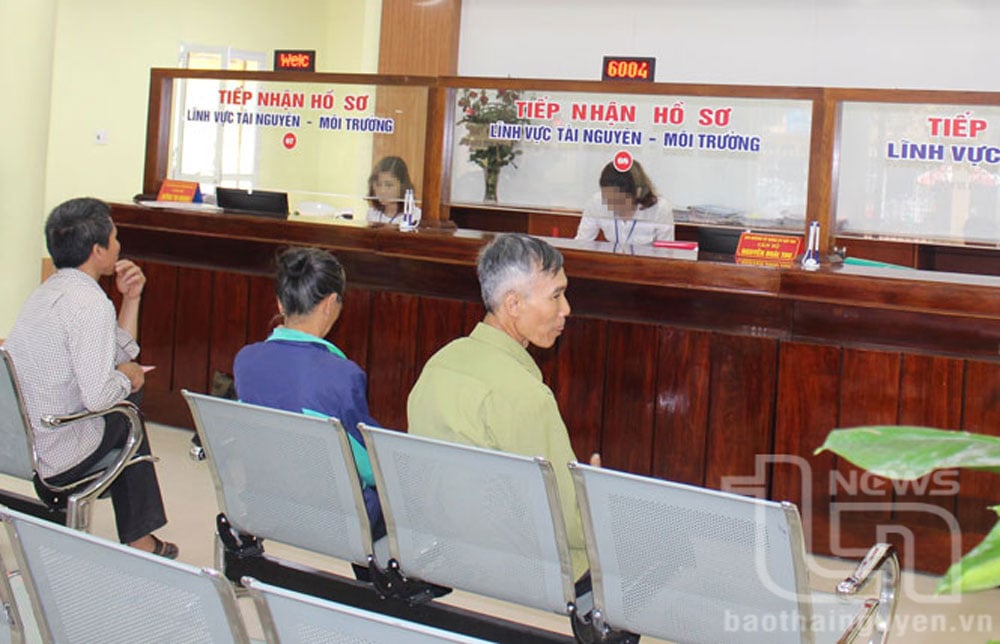 |
| The Ministry of Home Affairs proposed a budget of about 15,000 billion VND to address policies for commune-level officials and civil servants who do not meet job requirements from the state budget. |
The draft revised Law on Cadres and Civil Servants has just been officially submitted to the Government. The draft revised Law consists of 8 chapters and 53 articles, 34 articles less than the current Law. The draft Law is expected to be submitted to the National Assembly at the upcoming 9th session.
According to the submission, the draft Law amends regulations to connect cadres and civil servants at the commune level with the provincial level, unifying a civil service regime from the central to the commune level.
In addition, the draft Law also amends, supplements and clarifies a number of contents related to job positions, job position system, classification of job position contents and basis for determining job positions.
In the draft Law submission, the Ministry of Home Affairs proposed that the budget for resolving policies for commune-level officials and civil servants who do not meet the requirements of their job positions should be from the state budget of about VND 15,000 billion. This expenditure has been calculated and arranged in the budget for implementing the arrangement of administrative units at all levels.
The above proposal aims to address about 7.6% (equivalent to more than 16,150 people) who do not meet the standards out of a total of 212,606 commune-level cadres and civil servants, according to statistics as of December 31, 2024.
In addition, the draft Law also proposes transitional provisions for commune-level officials and civil servants.
Specifically, commune-level cadres and civil servants elected or recruited before the effective date of this draft Law shall be converted into cadres and civil servants according to the provisions of this draft Law and shall remain in the same number until the completion of the review, streamlining, restructuring and arrangement according to job positions according to the new regulations.
In addition, the draft law also proposes that this group retain their current salary until they are assigned new jobs according to Government regulations.
Within 3 years, provinces and centrally-run cities must arrange, streamline and restructure their staff according to the approved job position plan. The transition for this staff is carried out according to Government regulations.
Within 3 years from the effective date of this Law, the following shall be implemented:
Agencies must complete the construction and approval of job positions to fully implement the provisions of this draft Law.
During this period, Government regulations on recruitment, employment and management of civil servants continue to be implemented until the approval of job positions is completed.
Salary regime (including salary allowances) and bonuses applicable to cadres and civil servants shall be implemented according to regulations until the new salary regime according to job position is implemented.
The Government promulgates a new salary regime according to job position and implements the conversion of salaries of cadres and civil servants according to ranks and grades to salaries according to job position on the basis of inheriting the salary levels already enjoyed, creating motivation to improve labor productivity and work efficiency of cadres and civil servants.
The regulations on ranks of specialized laws shall continue to be implemented until the competent authority has new regulations in accordance with the job position system.
Compared to the draft submitted to the Ministry of Justice for appraisal, the draft Law submitted to the Government this time has adjusted the implementation time for arranging, streamlining and restructuring the team according to the approved job position project to 3 years instead of 5 years.
| Speaking at the opening session of the 11th Central Conference of the 13th tenure on the morning of April 10, General Secretary To Lam suggested major orientations including: The policy of rearranging administrative units - provincial level to 34 provinces and cities; not organizing district level, reducing about 50% of commune-level administrative units; operating a 2-level local government organization model, associated with decentralization, delegation of power, especially the new commune level after the merger, how to be truly close to the people, close to the people, and serve the people better. |
Source: https://baothainguyen.vn/xa-hoi/202504/de-xuat-chi-15000-ty-dong-giai-quyet-chinh-sach-voi-cong-chuc-cap-xa-243340b/


![[Photo] National conference to disseminate and implement Resolution No. 66-NQ/TW and Resolution No. 68-NQ/TW of the Politburo](https://vphoto.vietnam.vn/thumb/1200x675/vietnam/resource/IMAGE/2025/5/18/adf666b9303a4213998b395b05234b6a)

![[Photo] General Secretary To Lam visits exhibition of achievements in private economic development](https://vphoto.vietnam.vn/thumb/1200x675/vietnam/resource/IMAGE/2025/5/18/1809dc545f214a86911fe2d2d0fde2e8)
![[Photo] More than 17,000 candidates participate in the 2025 SPT Competency Assessment Test of Hanoi National University of Education](https://vphoto.vietnam.vn/thumb/1200x675/vietnam/resource/IMAGE/2025/5/17/e538d9a1636c407cbb211b314e6303fd)























![[Photo] Prime Minister Pham Minh Chinh chairs meeting on science and technology development](https://vphoto.vietnam.vn/thumb/1200x675/vietnam/resource/IMAGE/2025/5/17/ae80dd74c384439789b12013c738a045)





























































Comment (0)